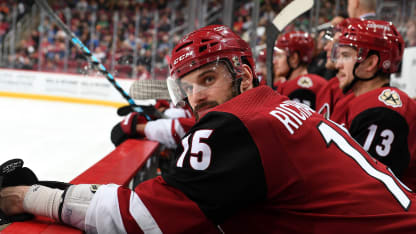Late playoff push: The Coyotes showed why they could be playoff contenders for seasons to come despite coming up short this season. They responded to a five-game losing streak (0-4-1) that started just before the NHL All-Star break by going 13-4-0 from Feb. 9 to March 14, best in the Western Conference during that stretch. The players fought through the adversity and responded to second-year coach Rick Tocchet, who guided them to a 16-point improvement from a last-place finish in the West in 2017-18.
Kuemper goal-den: Once goalie Darcy Kuemper took over the No. 1 role when Raanta's season ended, the former backup showed he's a legitimate NHL starter. Since Jan. 4, Kuemper is 22-9-6 with a 2.05 goals-against average, .933 save percentage and five shutouts. His 16 wins since Feb. 9 are second in the NHL (Andrei Vasilevskiy of the Tampa Bay Lightning leads with 18), and his .941 save percentage is third among goalies with at least 11 games played in that span.
Homegrown talent: Though the Coyotes traded Strome, the No. 3 pick in the 2015 NHL Draft, others are waiting in the pipeline. Pierre-Olivier Joseph, a 19-year-old defenseman chosen No. 23 in the 2017 NHL Draft, had 47 points (nine goals, 38 assists) and a plus-36 rating in 62 games for Charlottetown and Drummondville of the Quebec Major Junior Hockey League. Barrett Hayton, an 18-year-old forward selected No. 5 in the 2018 NHL Draft, had 66 points (26 goals, 40 assists) in 39 games for Sault Ste. Marie of the Ontario Hockey League. Nate Schnarr, a 20-year-old center and a third-round pick (No. 75) in 2017, had 102 points (34 goals, 68 assists) for Guelph of the OHL.

